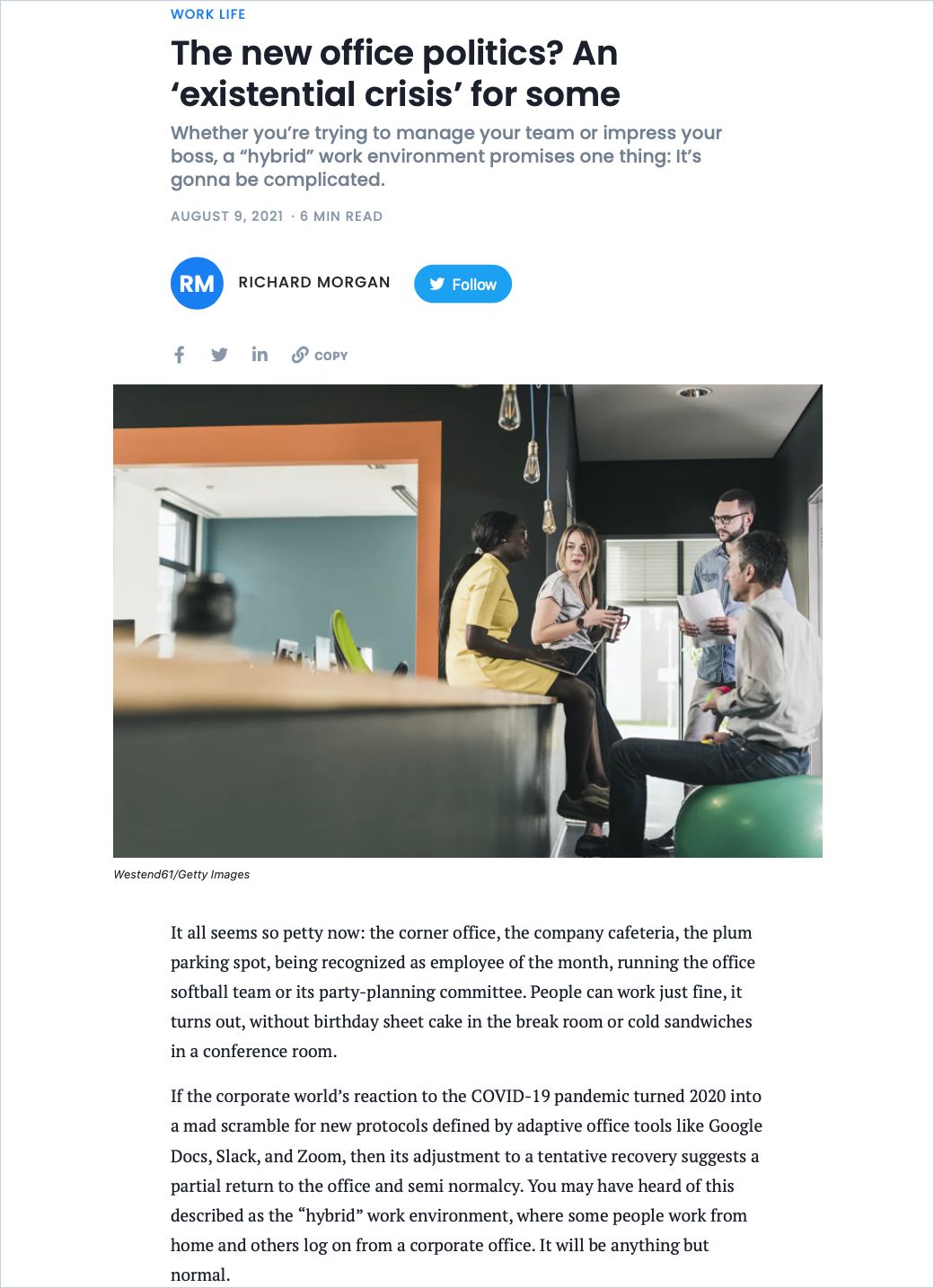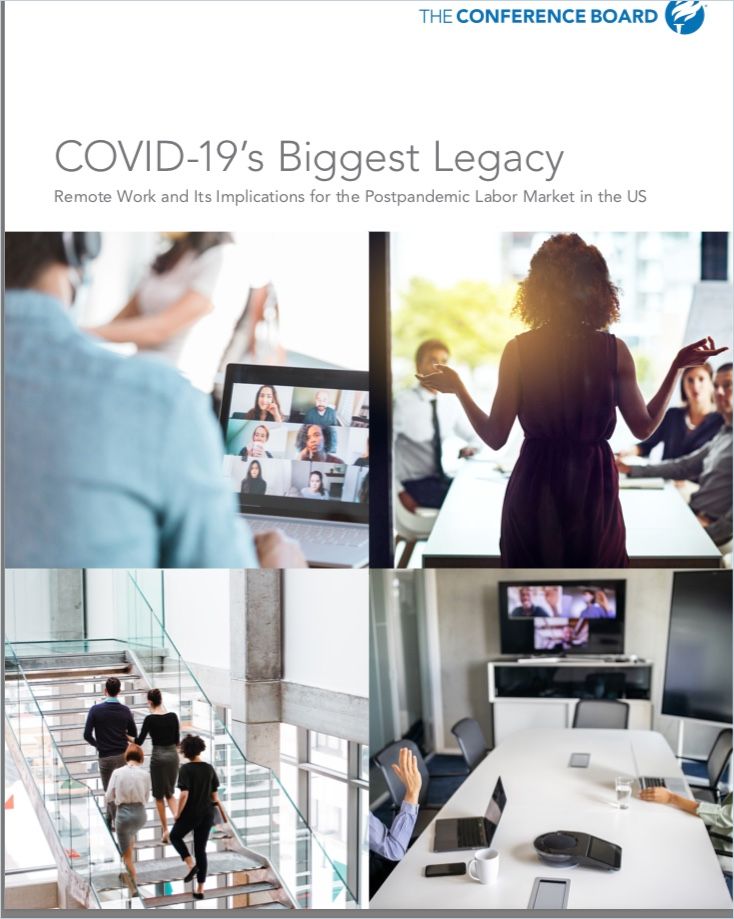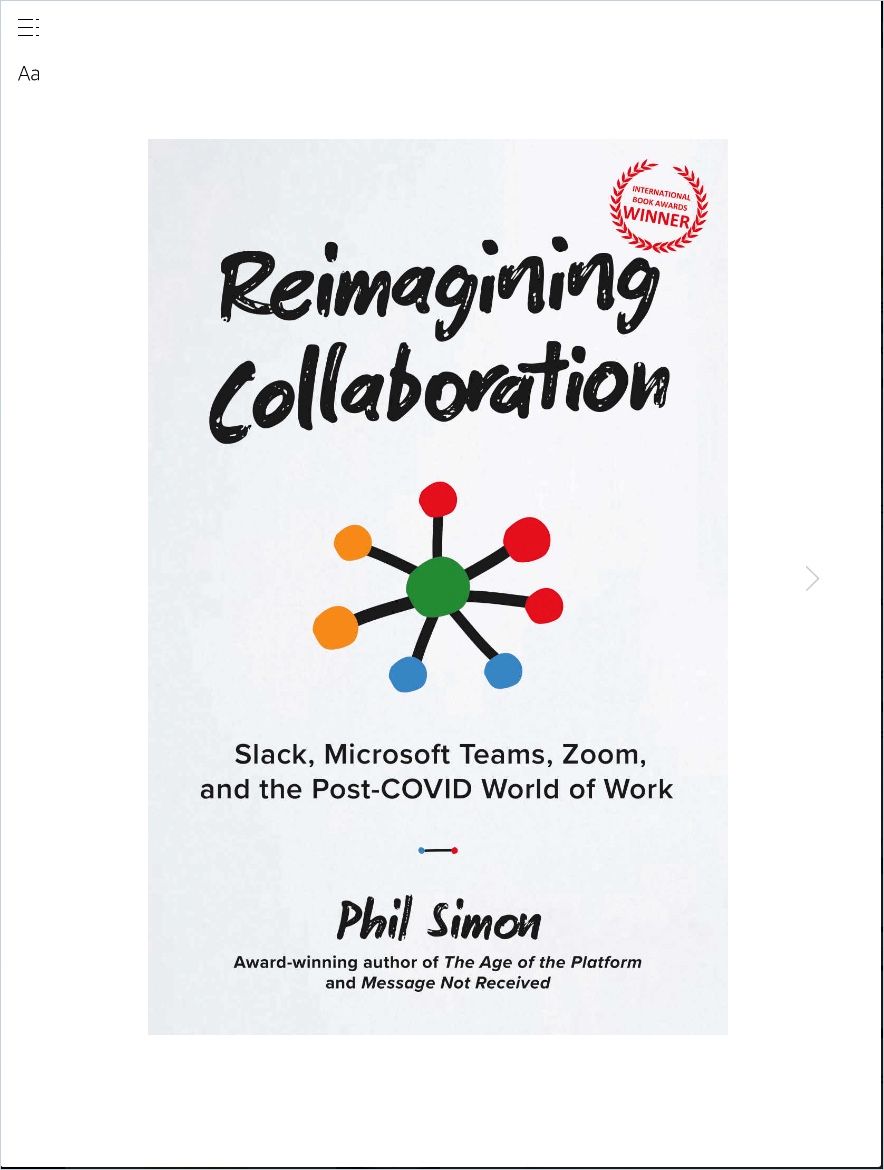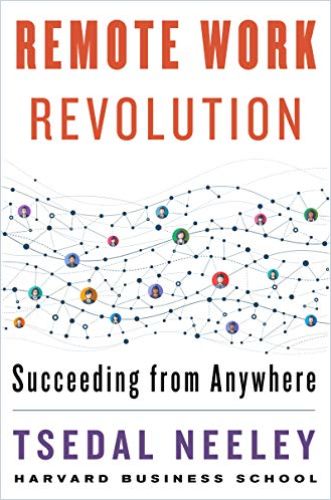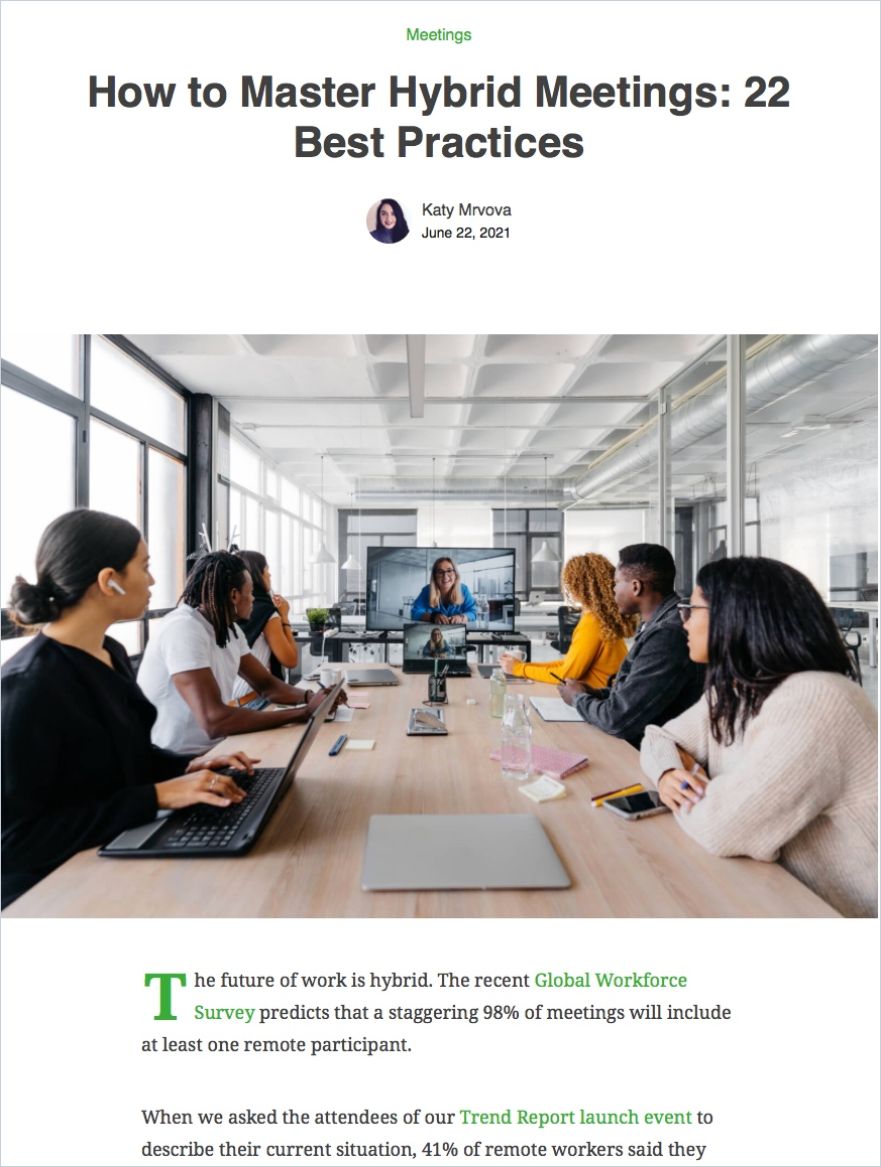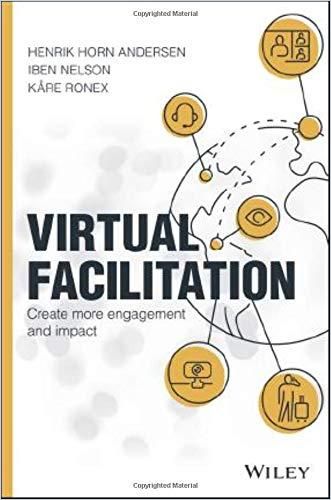How to Transition to a Hybrid Work Model

It may sound like the perfect “Goldilocks” solution to post-pandemic office work: Have people come to the office on some days and let them work from home on others. Enable workers to have quiet focus time at home but not too much so they won’t feel isolated. If you get the balance “just right,” the theory goes, everybody will be working at their maximum productivity – and everybody will be happy, right?
Not so fast. The transition to a hybrid workplace model may turn out to be more complex than the pandemic-era transition to all-remote work. Staff working on-site and online interact with each other on two different planes. Office workers, surrounded by physical distractions, may not be able to work at the same speed as online workers who can focus exclusively on digital activity. Remote workers, meanwhile, may feel disadvantaged for missing out on informal office talk. They may even start resenting their office-based colleagues for getting less work done than they do.
How can you encourage colleagues, impress a boss or ease interdepartmental tensions when half the team’s attention is on a different plane of corporate existence?
Richard Morgan
Leaders face the challenge of bridging growing divisions among team members and keeping up a corporate culture that does justice to both ways of working. This is easier said than done – but you may start with the following steps:
1. Establish Optimal Work Arrangements
Hybrid work arrangements include the option for local employees to work from home some of the time and come to the office a few days a week. In a piece for The Atlantic, Amanda Mull argues that employers and employees may fare best with a model of three days in the office and two at home.
But there is no one-size-fits-all. Whether someone thrives working remotely depends on the person’s job role and personality. What you don’t want to do is have people come to the office for two days and let them work quietly in their cubicle. When you have someone on-site, you want to make sure everyone benefits from the person’s presence.
When designing individual work arrangements for local team members, make productivity your guiding principle. London Business School professor Lynda Gratton advises taking the following four productivity factors into account:
- Energy
- Focus
- Coordination
- Cooperation
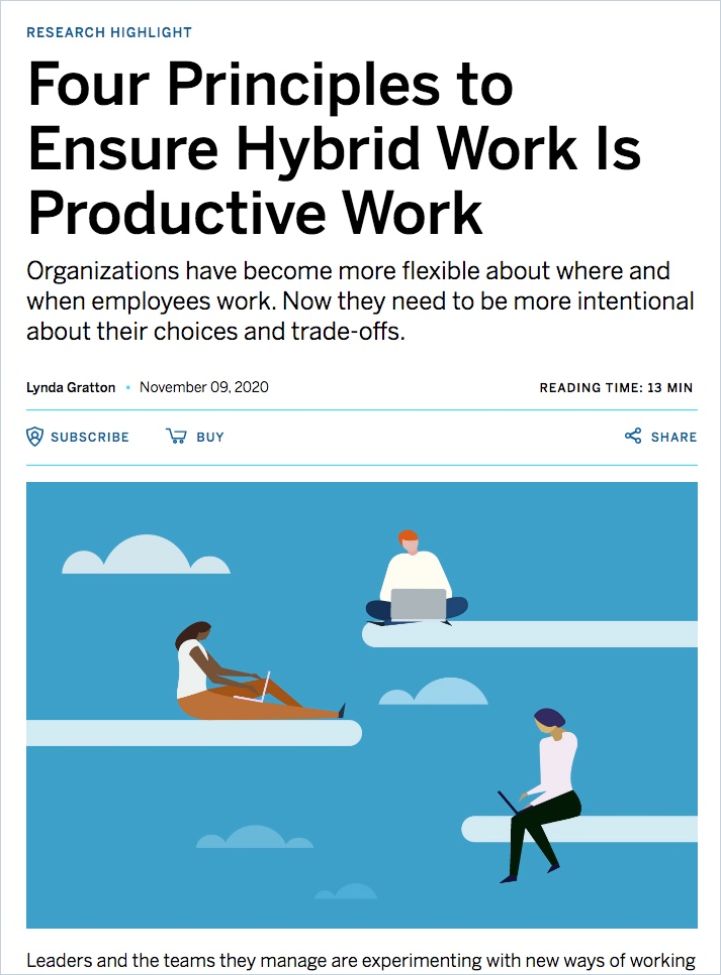
Four Principles to Ensure Hybrid Work Is Productive Work
MIT Sloan Management ReviewIn How the Future Works, Brian Elliott, Sheela Subramanian and Helen Kupp share the following tips for implementing schedule and location flexibility:
- Companies can be flexible in different ways: Flexibility does not just apply to remote work issues.
- Establish behavioral guidelines to ensure maximum flexibility: Create an environment in which everyone applies core principles of flexible work and fair collaboration equitably.
- Don’t dictate flexible work policies: Gain input from everyone on your team about which arrangement will work best for each person, and proceed from there.
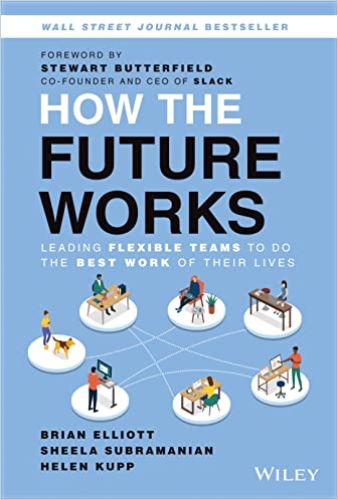
2. Maximize the Benefits of Collaboration
The number of hours knowledge workers today spend on communication has skyrocketed since the advent of tools like Slack and Zoom. But when it comes to collaboration, more isn’t necessarily better. Research about collaboration suggests that interaction helps people gather and process information, but too much interaction limits creativity and causes people to reach consensus on less-than-ideal solutions.
To bear fruit, collaborations require concrete plans. Outline the objectives and the steps necessary to succeed, as well as a reasonable timeline. Decide what parts of the collaboration can be done asynchronously (e.g., brainstorming in a Teams channel) and what parts require everyone to be together – some in person, others calling in remotely. Decide on the appropriate tools for each part of the collaboration and have team members adopt them uniformly.
In a location-flexible work environment, people come to the office so they can collaborate with others in person. Hence, find ways to optimize the positive aspects of being in a physical office space for them. You may want to redesign your office space with an open floor plan including cooperative workspaces, open meeting areas and rotating desk assignments that encourage employees to get to know their co-workers.
3. Maximize the Benefits of Focus Time
Interaction is great for gathering information, but silence is necessary for creativity. Create a work environment that encourages intermittent interaction without punishing those who choose to unplug. Encourage team members to block out focus time on their calendar to pursue deep work without distraction. You may even decide to turn collaboration tools on and off at certain times.
You will also want to support people working from home with establishing healthy work habits so they can continue to perform at a high level. Encourage them to set working hours and block out the times of day they are the most productive for high-focus work. Reiterate the importance of taking breaks to pursue activities that help them rejuvenate, and of maintaining clear boundaries between work and leisure time.
Having people set their own work hours turns out to be beneficial for jobs requiring intense focus. Employees who can set aside several hours without interruption to focus on a project will get more done. From a management point of view, this means measuring employee performance based on results. For example, a manager and employee can agree on the number of hours they expect a project to take, and the employee can work at his or her own pace.
4. Implement Appropriate Communication Channels
Providing equal access to information and knowledge is key to preventing communication issues and feelings of unfairness. Ensure that remote workers know that you don’t favor office workers over them.
Decide on appropriate communication channels for online meetings, asynchronous collaboration and status updates. Make sure everyone knows how to use each tool and for what purpose.
Hold meetings online by default unless everyone is in the room. Make remote workers feel included by welcoming them by name at the start of a meeting. Leverage technology to level the playing field between remote and in-person meeting participants. A number of virtual tools can help drive inclusion in hybrid meetings. Solicit input from every participant by having each person add his or her insights on a virtual whiteboard. Online polls are another great way to make everyone’s voice heard.
We have to consciously drive inclusive experiences to make all voices heard – wherever they are joining the meeting from.
Katy Mrvova
Invite people to type their questions into a live Q&A app. Finally, focus on good audio quality by having in-person participants speak closely into a microphone. Use high-quality external speakers, so everyone present can clearly hear the remote participants.
New remote tools, technology, software and high-tech gadgets appear constantly. No list of options will ever be definitive, but remote working entrepreneur Lisette Sutherland’s run-down of proven tools offers a great starting point. For an in-depth discussion on using the latest collaboration tools, read our interview with Phil Simon, author of Reimagining Collaboration:
Honing your communication skills is a good idea on any day – but especially so when managing a hybrid team:
5. Build a Virtual Culture Based on Trust
A positive hybrid culture requires trust. Don’t micromanage employees who work from their homes. Instead, check on their progress regularly so you discover any problems early. Treat remote workers as responsible adults, giving them autonomy and flexibility rather than overburdening them with rules about how to structure their time.
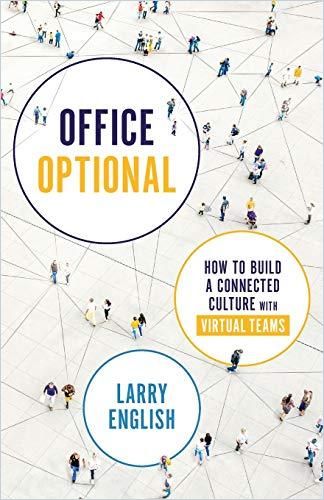
As a leader, consider bringing more of your personality to work: Perhaps you could record personal video messages or share small details about your life to help your colleagues feel a greater connection with you. Leave time for people to chat about non-work topics before virtual meetings to encourage distant team members to get to know one another. For example, the virtual call’s facilitator could spur conversation by asking a lighthearted question that prompts people to share details about themselves before the meeting. Consider implementing a workplace ritual that fosters team spirit and engagement – such “check-ins and check-outs.”
Vulnerability is the secret ingredient and shortest route to building any strong, collaborative relationship, whether your relationship is strictly virtual or in person.
Larry English
Drawing on years of extensive motivational research, consultant Susan Fowler explains that managers can unleash employees’ maximum potential by meeting their psychological needs for “autonomy, relatedness and competence.” You can do that by offering employees independence; relating to them as human beings; and helping them grow both personally and professionally.
Supervising remote workers requires being willing to trust them. As you learn to do that, you’ll improve as a manager, and you and your team members can grow together to become better people. Top managers create trust, establish clarity and help their employees, in the office or remotely, achieve their potential.
For more on psychological safety, check out our How-to-Guide:
